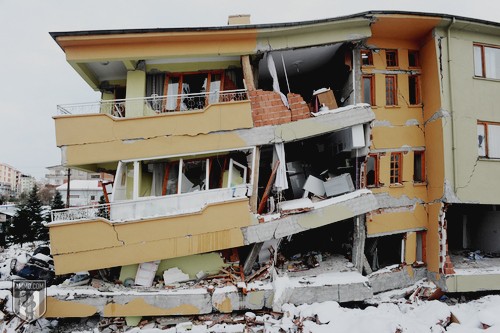
Fault lines crisscross the world causing tens of thousands of earthquakes every year but most are so small that they go unnoticed. Its the powerful earthquakes that make headlines. And although rare they can devastate communities and cause disruption to food water and electricity supplies for weeks or even months. These earthquakes strike with little to no warning so preparation is key to your familys survival.
The United States has some of the best earthquake building standards and the quickest emergency response times in the world. But you are still responsible for ensuring the safety of your home and family during a disaster. By preparing an emergency survival kit practicing how to get to safety during an earthquake and getting ready to handle the disruption of food water and electricity in the aftermath of a major seismic event you protect yourself your family your home and your community.
Measuring Earthquakes
The
Richter scale measures earthquake intensity between the range of zero and 10 with each level being 10 times stronger than the one before. That means a magnitude 6.0 quake is 10 times stronger than a magnitude 5.0 quake a magnitude 7.0 quake is 10 times stronger than a magnitude 6.0 and so on.
While an average of 55 earthquakes between 5.0 and 5.9 on the Richter scale hit the United States each year between 2000 and 2012 only an average of 5.5 earthquakes between 6.0 and 6.9 on the Richter scale hit the United States each year during the same period. Earthquakes below 4.0 on the Richter scale rarely cause significant damage and temblors below 2.0 cannot even be felt. But the big ones" anything above magnitude 7.0 can cause untold devastation when they do strike.
The Great 1906 San Francisco earthquake which caused more than 700 deaths in building collapses and the fires that followed had an estimated magnitude of 7.8. About 10 to 20 magnitude 7.0 quakes occur every year worldwide while even stronger quakes can occur from once a year to once every 50 years.
The magnitude of an earthquake and the death and destruction it causes are not always connected. The largest recorded earthquake in the United States was a magnitude 9.2 temblor that struck Prince William Sound
Alaska in 1968. Despite its intensity nobody died due to Alaskas sparse population.
Continue reading
Earthquake Preparedness Guide: How To Stay Safe and Survive at
Ammo.com.
 Fault lines crisscross the world causing tens of thousands of earthquakes every year but most are so small that they go unnoticed. Its the powerful earthquakes that make headlines. And although rare they can devastate communities and cause disruption to food water and electricity supplies for weeks or even months. These earthquakes strike with little to no warning so preparation is key to your familys survival.
The United States has some of the best earthquake building standards and the quickest emergency response times in the world. But you are still responsible for ensuring the safety of your home and family during a disaster. By preparing an emergency survival kit practicing how to get to safety during an earthquake and getting ready to handle the disruption of food water and electricity in the aftermath of a major seismic event you protect yourself your family your home and your community.
Fault lines crisscross the world causing tens of thousands of earthquakes every year but most are so small that they go unnoticed. Its the powerful earthquakes that make headlines. And although rare they can devastate communities and cause disruption to food water and electricity supplies for weeks or even months. These earthquakes strike with little to no warning so preparation is key to your familys survival.
The United States has some of the best earthquake building standards and the quickest emergency response times in the world. But you are still responsible for ensuring the safety of your home and family during a disaster. By preparing an emergency survival kit practicing how to get to safety during an earthquake and getting ready to handle the disruption of food water and electricity in the aftermath of a major seismic event you protect yourself your family your home and your community.
 Fault lines crisscross the world causing tens of thousands of earthquakes every year but most are so small that they go unnoticed. Its the powerful earthquakes that make headlines. And although rare they can devastate communities and cause disruption to food water and electricity supplies for weeks or even months. These earthquakes strike with little to no warning so preparation is key to your familys survival.
The United States has some of the best earthquake building standards and the quickest emergency response times in the world. But you are still responsible for ensuring the safety of your home and family during a disaster. By preparing an emergency survival kit practicing how to get to safety during an earthquake and getting ready to handle the disruption of food water and electricity in the aftermath of a major seismic event you protect yourself your family your home and your community.
Fault lines crisscross the world causing tens of thousands of earthquakes every year but most are so small that they go unnoticed. Its the powerful earthquakes that make headlines. And although rare they can devastate communities and cause disruption to food water and electricity supplies for weeks or even months. These earthquakes strike with little to no warning so preparation is key to your familys survival.
The United States has some of the best earthquake building standards and the quickest emergency response times in the world. But you are still responsible for ensuring the safety of your home and family during a disaster. By preparing an emergency survival kit practicing how to get to safety during an earthquake and getting ready to handle the disruption of food water and electricity in the aftermath of a major seismic event you protect yourself your family your home and your community.
